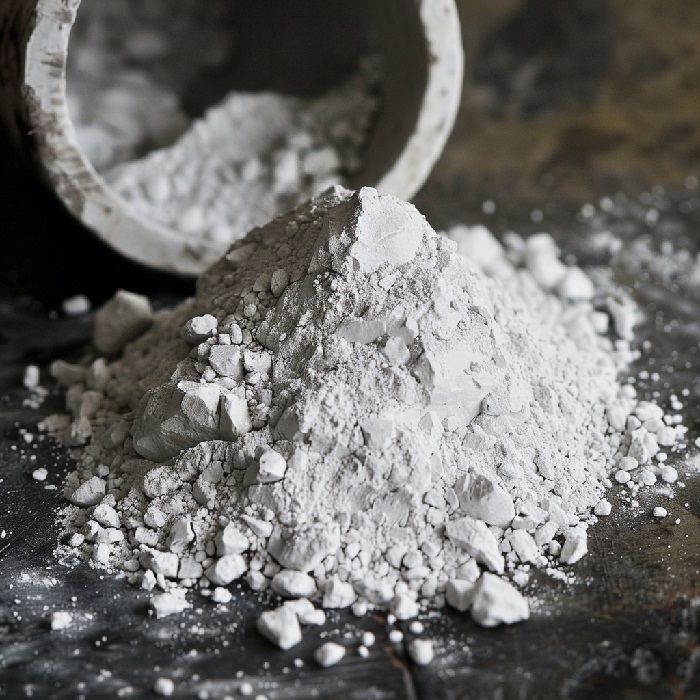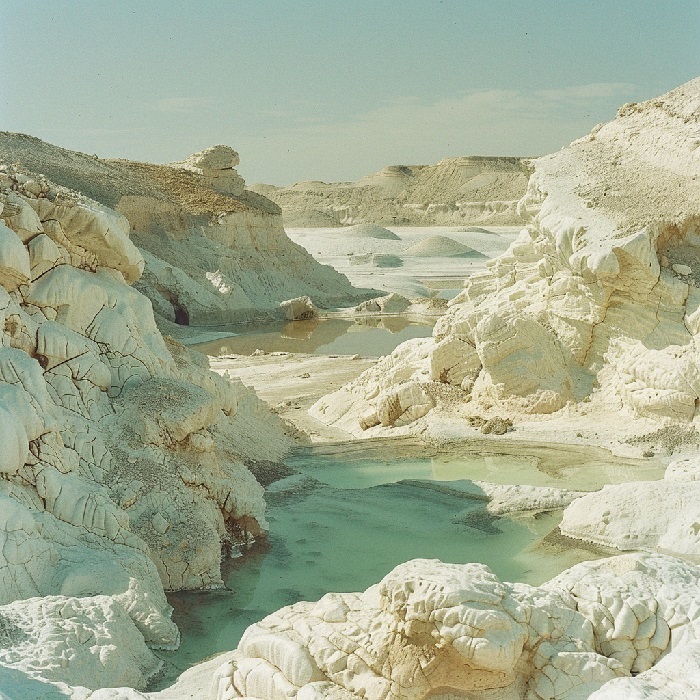KAOLIN
KAOLIN:
Kaolin is a clay mineral, characterized by stacked silicate layers with one tetrahedral sheet linked through oxygen to a single octahedral sheet of alumina. Rocks rich in kaolin content are typically termed as china clay or kaolin.
Kaolin is one of the most widely recognized minerals and is extracted as kaolin in Brazil, France, the USA, China, and many other parts of the world. It is one of the most common mineral forms found spread throughout the world.
Kaolin has low shrinkage and low cation exchange capacity. It is a soft, earthy mineral, often white in color, formed by the chemical weathering of aluminum silicate minerals such as feldspar. Kaolin can be found worldwide in various color variations, including orange or rusty brown, depending on the iron content in the clay.
Kaolin, also known as china clay, is found in China, the UK, the US, and Brazil. It is typically extracted through open-pit mining. The mining techniques may vary depending on the origin of the kaolin. Let's explore the steps involved in mining kaolin.
THERE ARE SEVERAL STEPS :
Exploration:
The first step in mining kaolin is exploration. Geologists study the Earth's surface to determine the availability of kaolin. Clues such as outcrops, stream beds, and road cuts indicate the presence of kaolin. Confirmation is made through factors like stratigraphic position, topographic elevation, remote sensing, and geomorphologic features. Samples are then taken for laboratory testing, extracted via core drilling or auger drilling. Core drilling involves a machine designed to drill out a cylinder of material, similar to a hole saw. Auger drilling, on the other hand, uses a rotating helical screw blade to extract ore from the ground.
Resource development:
The next step involves drilling the deposit in a progressively denser grid pattern. Evaluation of the resource potential includes factors such as clay thickness, continuity, quality, distance to the production plant, and transportation considerations.
Open-pit mining:
Once the social and environmental impact is considered, mining begins. In open-pit mining, surface material covering the kaolin ore deposits is removed through drilling. Explosives may also be used to remove surrounding material. Specialized tools are then used to extract the deposits lying beneath.
Closure and rehabilitation:
The overburden and topsoil are then refilled and left to return to their natural habitat. The mined-out land is repurposed as a habitat for wildlife, timber plantations, farming, hunting, and fishing. To achieve brightness or whiteness, flotation or selective flocculation is used to remove minerals causing discoloration, often caused by iron or titanium deposits.
Processing of kaolin:
Kaolin processing varies according to the end-use application and is typically divided into three basic types: wet, dry, and thermal processing. In wet processing, the mineral-water suspension passes through several filters and hydro separators to remove coarse mineral particles. Beneficiation is employed to remove discoloration caused by mineral impurities. The processed material is used for making paper and functional filters. Dry processing, also known as floatation, involves fewer steps and is done at a lower cost.
The ore is first milled, air-classified to remove grit, and dried to eliminate water content. Dry processing results in poorer color and higher grit content compared to wet processing. The final applications for this ore are ceramic and fiberglass products. In thermal processing, high-temperature firing is induced in wet or dry processed ore using a rotary or vertical kiln. Calcination increases whiteness, hardness, electrical properties, size, and shape. The temperature is adjusted according to the desired product outcome. The processed material is then used for ceramic, paint, refractory, and paper grades.


TYPES OF KAOLIN :
There are several types of kaolin, each with its own unique properties and uses. The most common types of kaolin are:
1. Kaolinite: This is the most common type of kaolin and is available in a wide range of colors, including white, yellow, pink, and red. It is used in a variety of industries, including paper production, ceramics, and pharmaceuticals.
2. Halloysite: This type of kaolin has a unique structure with a hollow core and is typically used in the production of paints and inks.
3. Metakaolin: This is a very fine powder that is usually created by heating kaolinite to very high temperatures. It is used in the production of cement and as a filler in plastics.
4. This type of kaolin is created by heating kaolinite to very high temperatures, resulting in a white, powdery substance. It is used in the production of paper, ceramics, paints, and rubber.
5. This type of kaolin is created by adding water to kaolinite, resulting in a paste-like material that is often used in the production of porcelain and pottery.
KAOLIN MINING AND PROCESSING :
Kaolin mining involves the extraction process of kaolinite minerals from the earth. Kaolin deposits are found all over the world and are mined in many countries including China, Australia, the United Kingdom, Brazil, and the United States. The extraction process of kaolinite begins with the mining of the ore. Large bulldozers are used to remove the topsoil and layers of bedrock in order to uncover the ore deposits.
Once the ore has been exposed, it is then blasted with explosives and loaded onto trucks to be taken to a processing plant. At the processing plant, the ore is dried, crushed, and screened for size. The kaolin is then further processed through mechanical and chemical processes that separate the different components of the ore. Various methods such as air classification, sieving, and sedimentation are employed in this process.
The final step in kaolin processing is calcination, which involves heating the kaolin to a temperature of 1000-1200 degrees Celsius. This process removes moisture and other impurities from the kaolin, resulting in a product that is purer and more suitable for industrial applications.
KAOLIN MINING REFINING :
Kaolin mining and refining involve several different procedures. First, the kaolin ore must be excavated from the ground. It is then transported to the processing plant, where it is crushed, dried, and milled. The milled kaolin goes through various stages of separation and refining processes to remove impurities and purify the kaolin. This typically involves passing the kaolin through a series of screens and centrifuges to remove any coarse particles or large clumps of clay. The kaolin then undergoes one or more chemical processes to eliminate any remaining impurities. Finally, the kaolin is bleached with a chemical to whiten it and improve its overall appearance and purity. The refined kaolin is then packaged and shipped to the customer.










